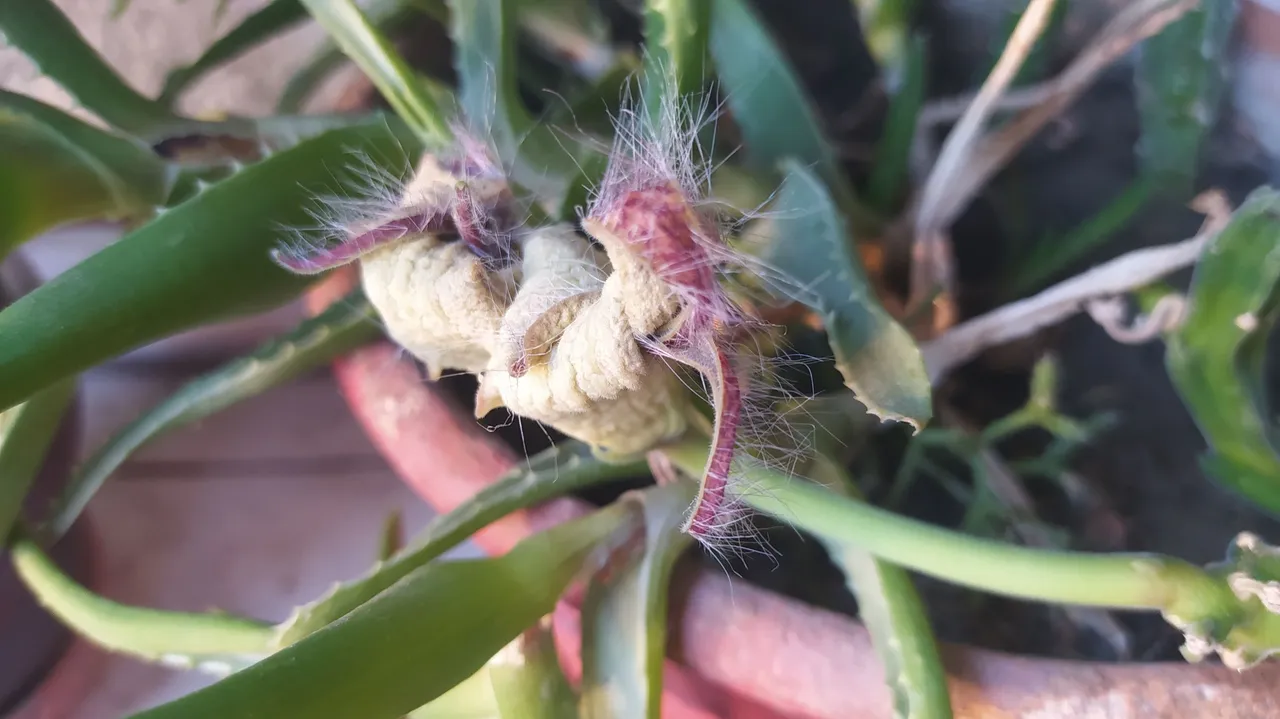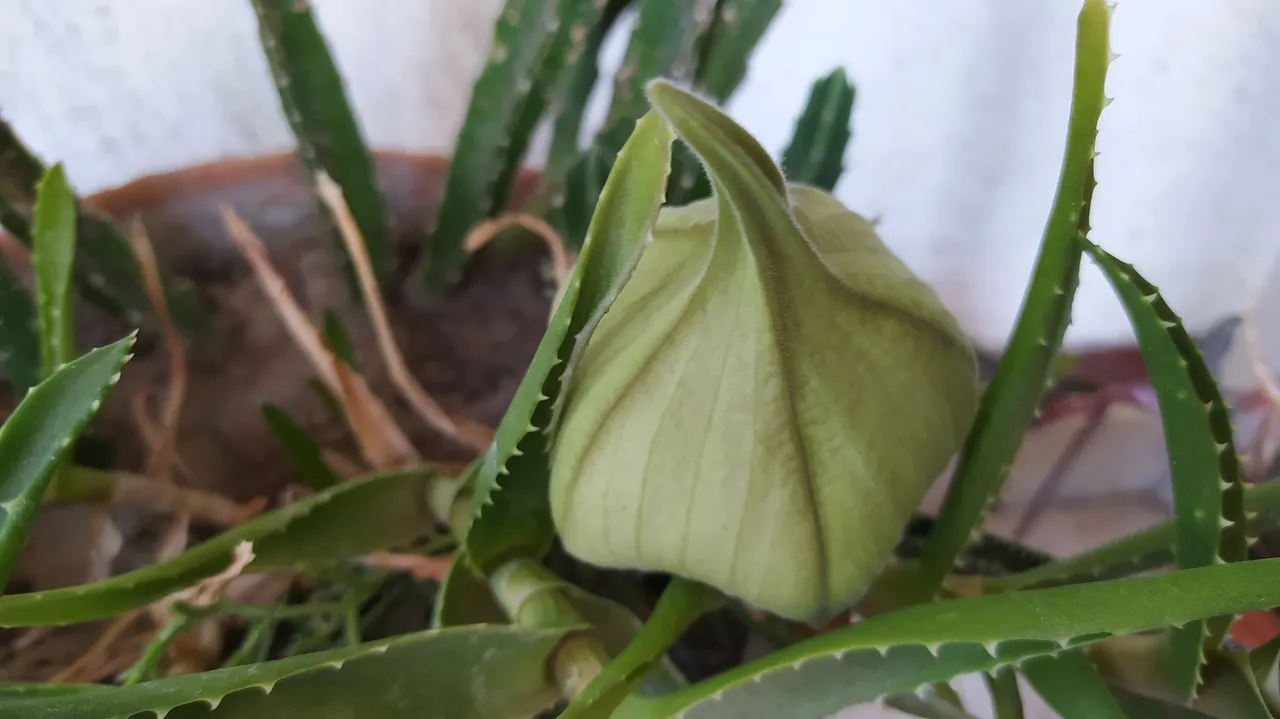
It was one August day, when the luck knocked on my door. Not precisely on my door, but as I was there, witnessing the blooming of mom's Stapelia, I can say that it was my lucky day too. At the entrance of her house, she has a cacti empire, I showed it on one occasion, back in July in this post. I looked now at the photos from there, and there were no signs that this "starfish" will show itself. One month later, it just happened that we were able to witness the whole process. Yes, I captured different moments of the flower opening. From the bud to the fully open flower, even when it has dried. And also, with one guest on the flower.
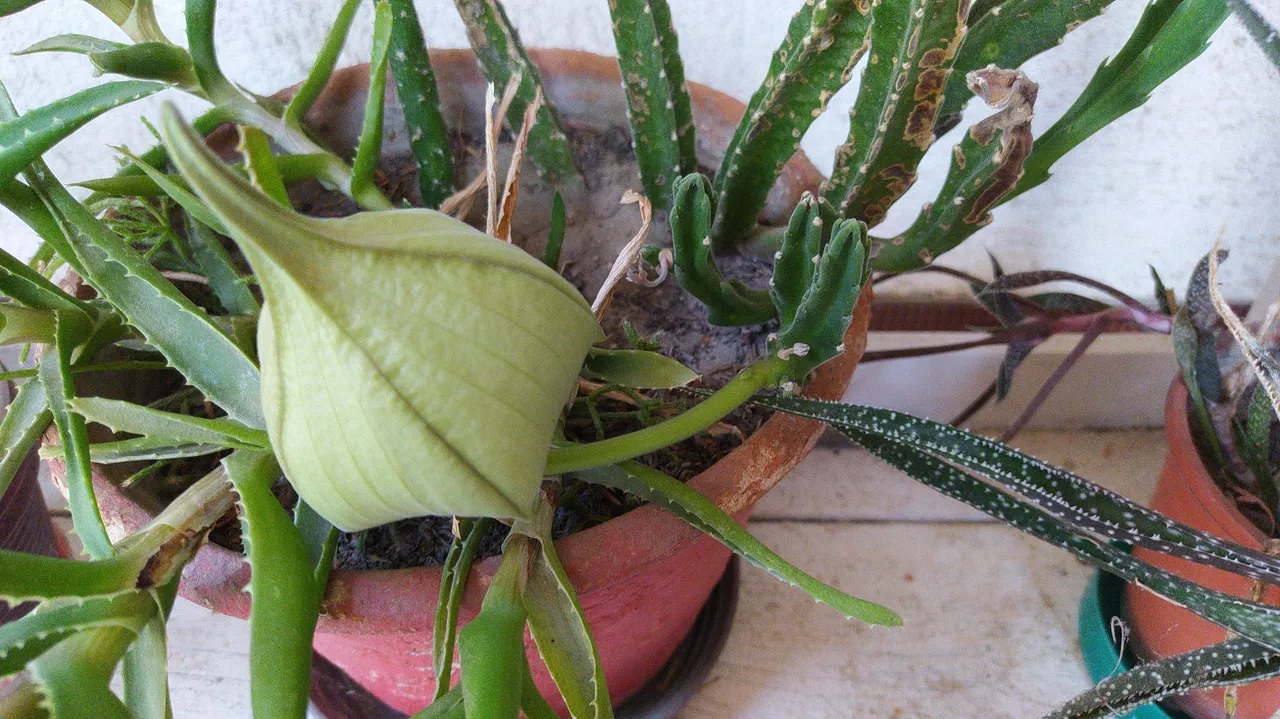
I know that at first glance it seems that the bud grows from aloe, but that's because my mother planted different plants in one pot. Undoubtedly, the bud comes from Stapelia. In this second photo, we can see that stalk that connects it to its mother plant. It was noon when I saw this huge bud.
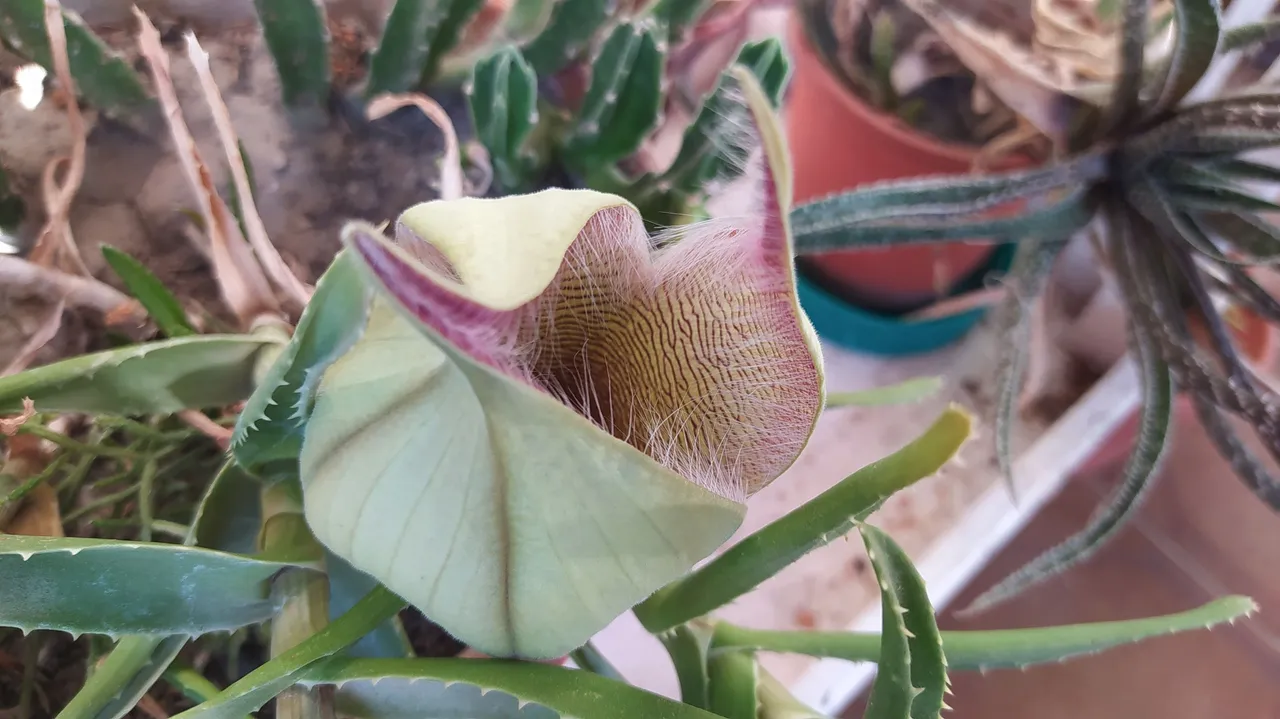
In the afternoon I returned to their house to see what is happening with the bud. Then one petal started to open. The appearance of the interior began to show so I saw those red lines, those nice banded patterns. A few hours passed and it was completely open in the evening. Of course, I was there checking on it often during those hours. It was a real fun seeing me that afternoon going out again and again to see in which phase the flower was.

We were talking with my parents about a similar plant that my grandma had. We remember well that the flowers from her plant were smaller and with brown spots. So we were in dilemma, is it the same plant or not, but I am now sure that not. I did a bit of searching, and how I remember my grandmother's plant, I found that it was Orbea variegata, like this one . The flowers were not hairy, and as I mentioned, they had brown spots, like a lizard or a toad.
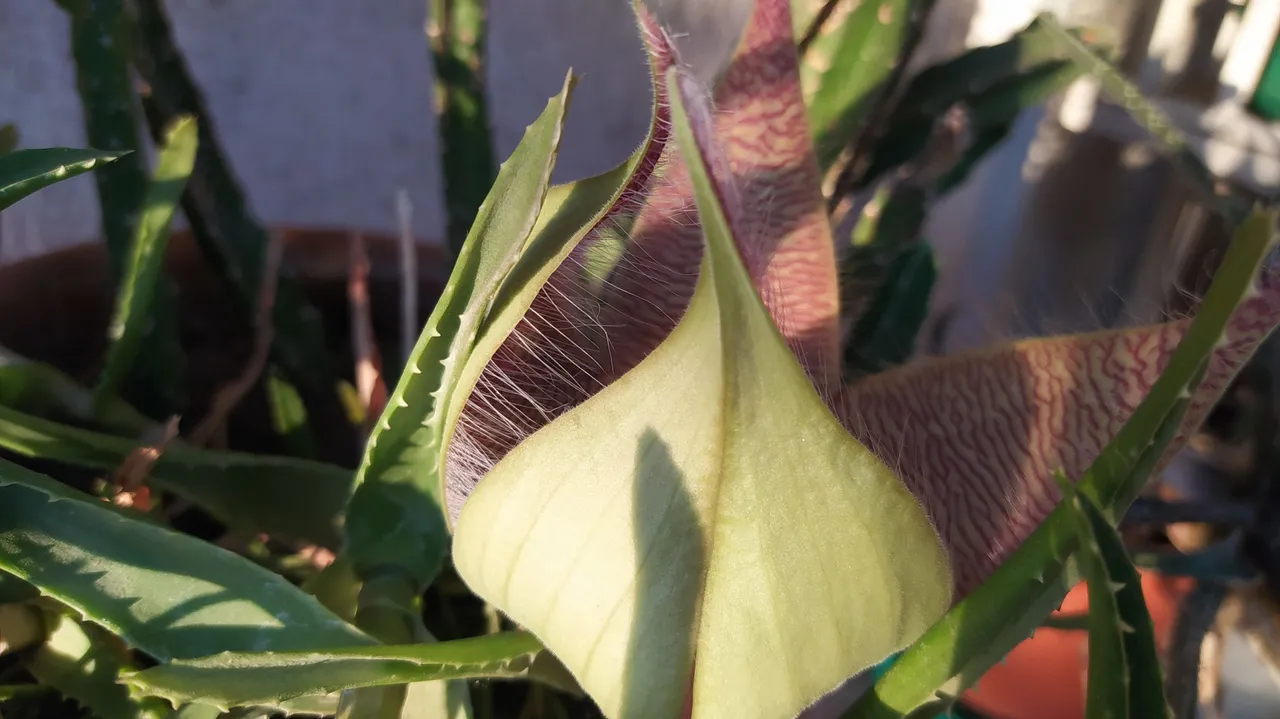
As our flower was slowly but surely opening, and I was checking on it sometimes, we also remembered the smell of the other flower. It is very well known that the smell is like rotten meat or dead fish. I was trying to determine the smell of this one, but it had no scent the first day. Well, the second day it had a more developed odor. Even a fly came to enjoy it. It was there, for a few minutes, it gave me time to get into the house and bring my phone and take a photo. You will see it in a few photos from here.

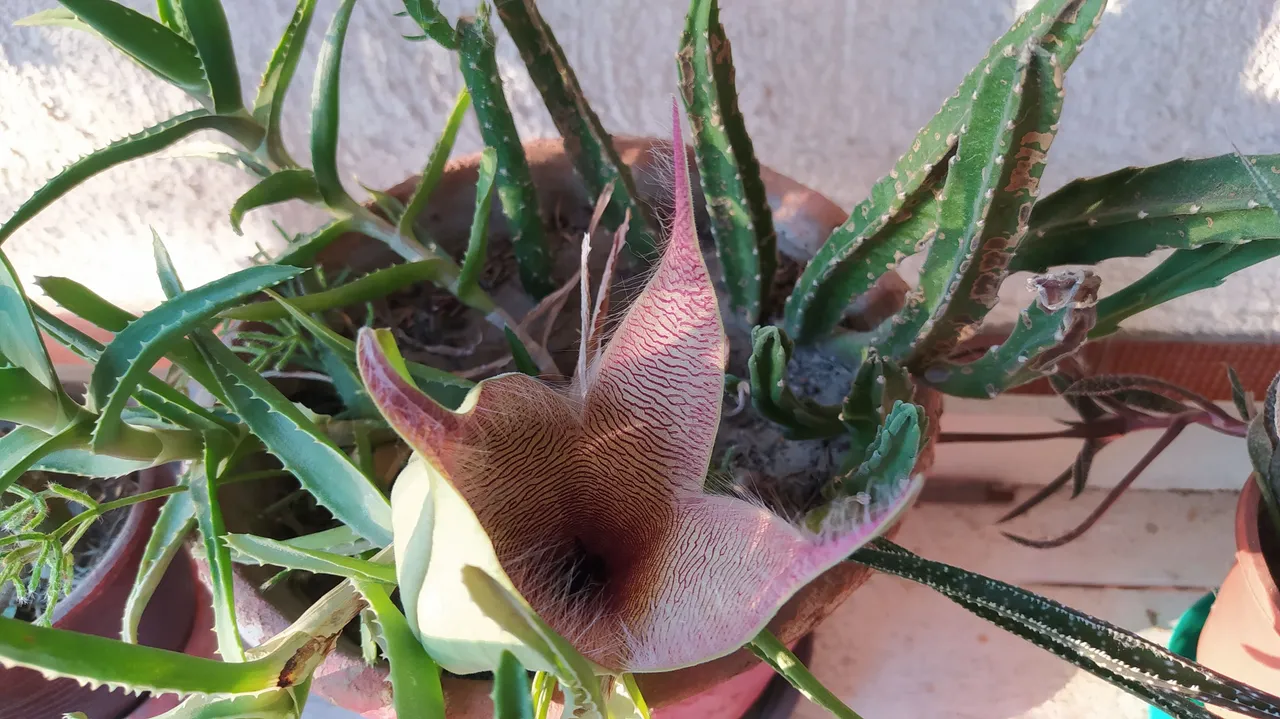
What is attractive is that the petals are hairy. They are adorned with long white hairs, and the surface is interspersed with a banded pattern. The lines were something between purple and red, on a lighter background. It even looks like meat, it is not just the smell that attracts the flies. This flower is pollinated by them, instead of bees. An interesting method that Stapelias use.
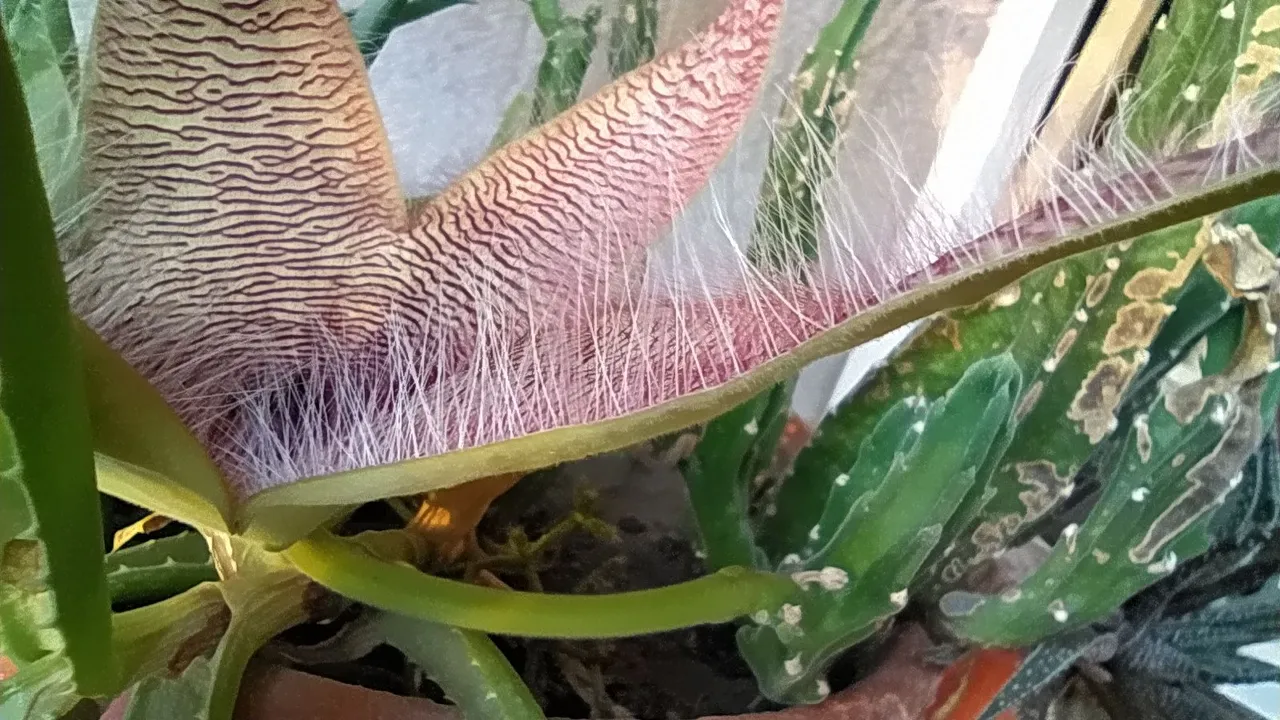
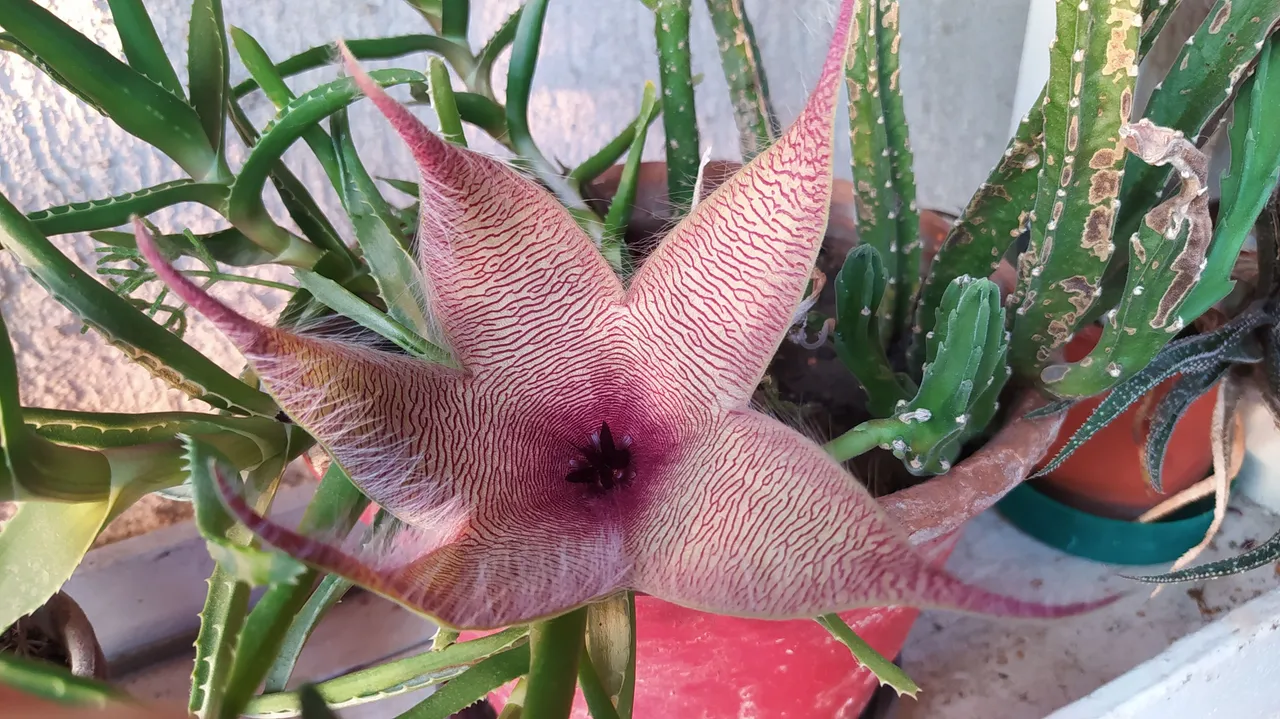

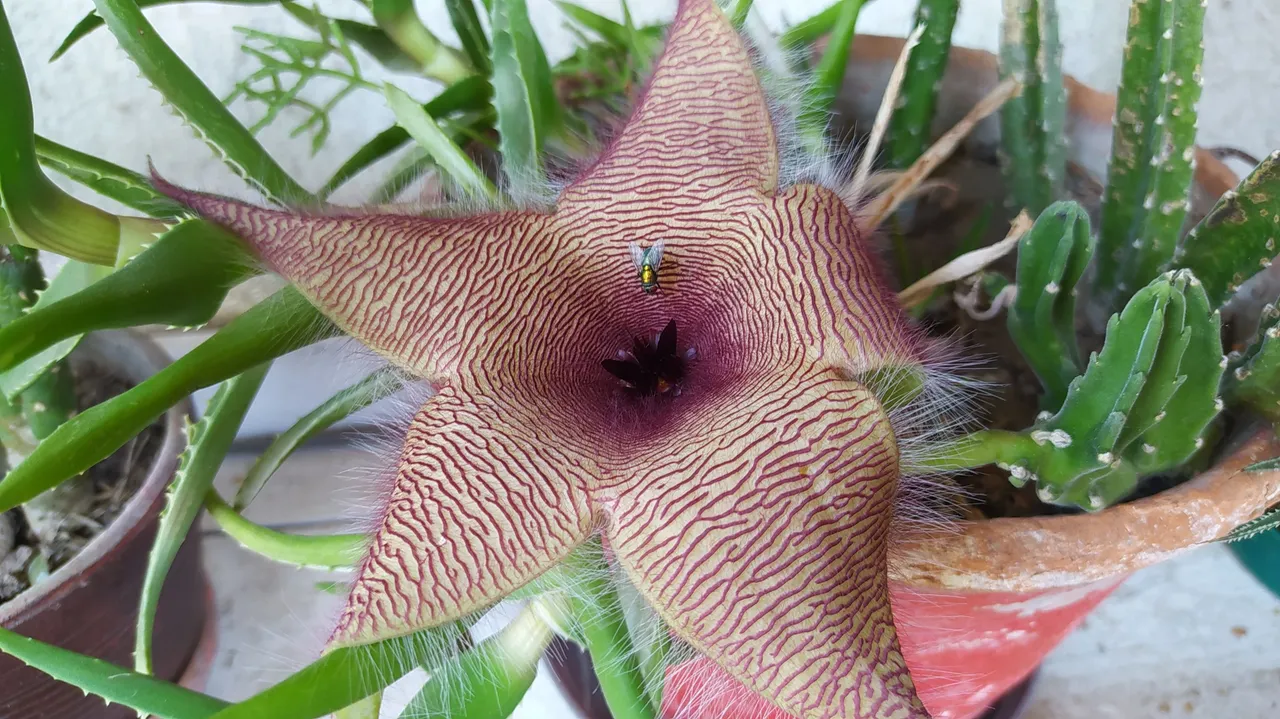
So by the evening, the flower was open. However, the next day it was even nicer. That’s when the petals folded down and gave it a pretty look. Now I am thinking about which type do I have here in Spain. Is mine Orbea Variegata or this Stapelia gigantea. I suppose that I have to wait a bit of time to see when the first flower will come if the plant survives. Btw, all my succulents survived until now, it is now the official statement by me! Me - not a plant killer jet. Those that were not in so good shape improved a lot... yeah, they just missed me hahaha.
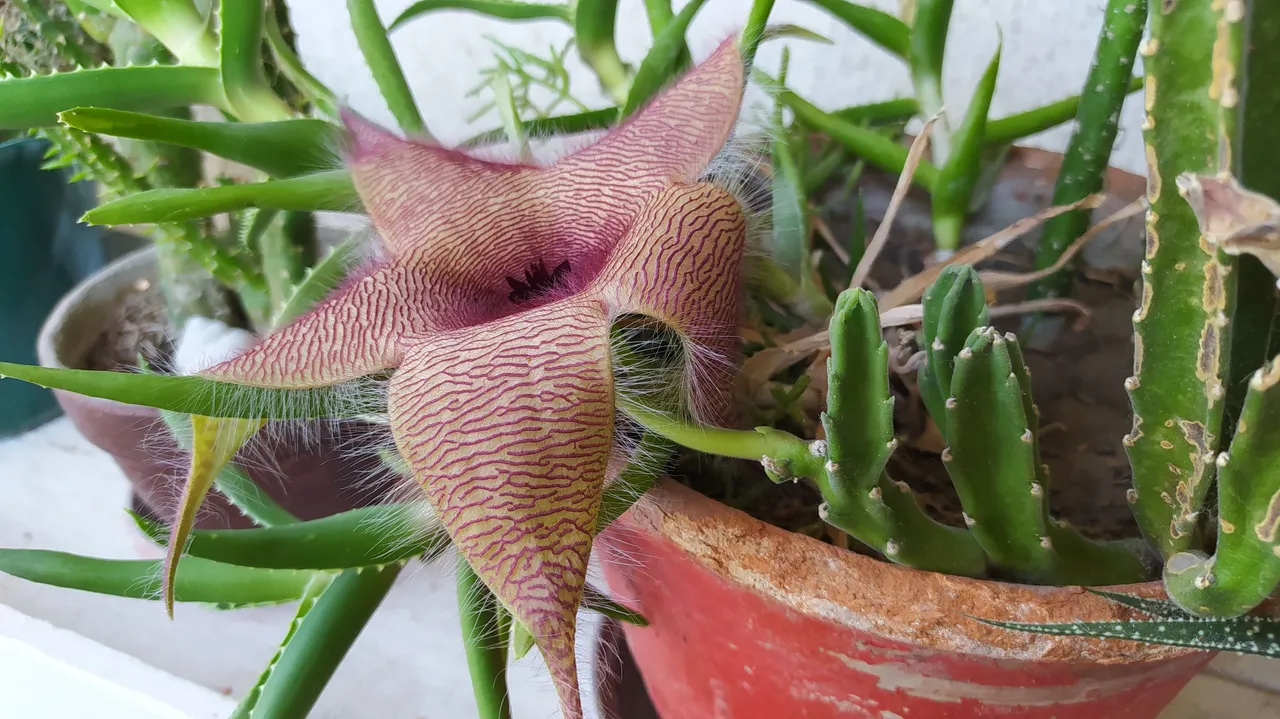
The flower was open for two days. On the third day, I didn't go to my parents, so I don't know what the flower looked like, but this is what was left of it on the fourth day. Drained. Obviously, nothing lasts forever.
